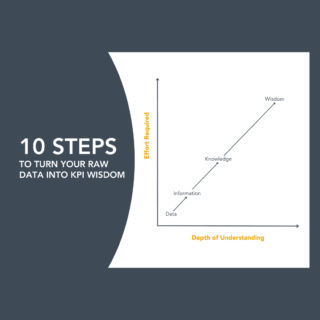The KPI paradigm shifts of PuMP® series is about five of the many ways that Stacey Barr’s Performance Measurement framework (known as the PuMP Blueprint) helps us change our level-of-thinking about performance measurement so we can truly align teams to our organization’s strategic direction and drive more successful strategy implementation.
The idea for our Webcast on the same topic came from the Paper published by the United Nations Economic Commission for Europe. Their Paper is about how they used PuMP to measure the value of official statistics, as well as the paradigm shifts they experienced while using the PuMP approach, especially their experience with results mapping.
Setting the Context
Our blog series will explore five paradigm shifts needed within an organization’s performance measurement culture if you want evidence you can trust to make decisions during strategy execution. Organizations should never measure simply for measurements’ sake as it results in wasted time, energy, money, and effort. If you are going to measure, use it to seek the truth about whether your organization is improving its performance and achieving its strategy – and if not, then why not?
This wouldn’t be a PuMP blog if we didn’t unpack the corporate jargon!
1. What is a paradigm? In the simplest terms, a paradigm is a shared set of understandings, conceptions, interpretations, or beliefs. It is a core way of thinking about some aspect of our business experience, commonly held by a large community of people.
2. And, what is a paradigm shift? A paradigm shift* is a major change in how people think and get things done that upends and replaces a prior paradigm. In the business world, a paradigm shift is often a change in the perception of how things should be thought about, done, or made. The shift can result after the accumulation of anomalies or evidence that challenges the status quo, or due to innovation or discovery. Not surprisingly, there is often resistance to the new paradigm. The concept of a paradigm shift was first formalized by physicist and philosopher of science Thomas Kuhn in 1962. (*source: Investopedia.com)
Each Blog has 3 Core Sections:
- What is the needed paradigm shift and why it matters
- The symptoms you observe when your organization has not yet made the shift
- Three “trigger” questions you can use to engage leaders and co-workers in the conversation.
- KPI Paradigm Shift #1: Use Measures to improve and learn, not to judge and blame
- KPI Paradigm Shift #2: Use Measures to monitor our impact, not our activity.
- KPI Paradigm Shift #3: Great measures come from evidence, not data.
- KPI Paradigm Shift #4: Team alignment to strategy comes from cause and effect thinking, not “mini-me” copy and paste.



